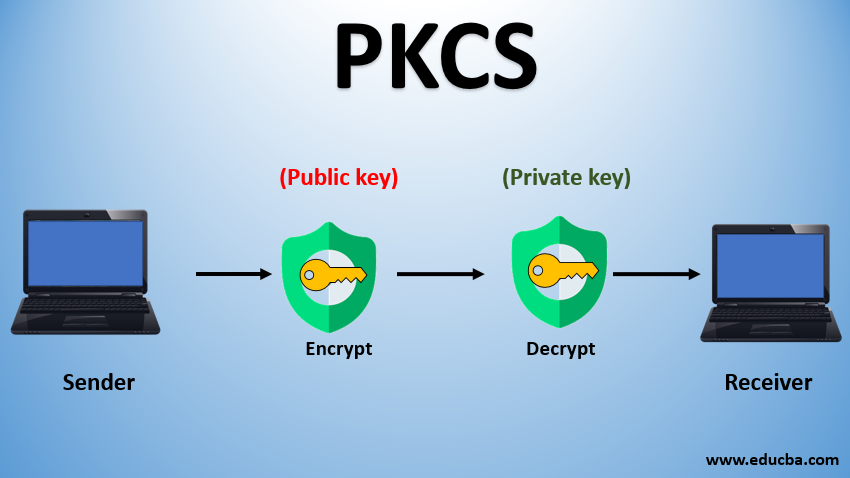Updated May 26, 2023

Introduction to PKCS (Public-Key Cryptography Standards)
PKCS stands for public-key cryptography standard and is a model developed by RSA laboratories in early 1990 designed to standardize the public key infrastructure. Public Key Cryptography Standard provides 15 standards named as a number like PKCS#1, PKCS#2, PKCS#3, ….. PKCS#15.
List of Public Key Cryptography Standards
There is a total of 15 Public Key cryptography standards. Let’s discuss those Public Key cryptography standards one by one.
PKCS #1
The primary purpose of this standard is the RSA encryption standard. This standard defines the basic rules for RSA Public Key functions, specifically the digital certificates. This standard also defines the syntax for the RSA private and Public Keys, which helps to choose and calculate the RSA algorithm’s key pair. It also explains how digital certificates should be calculated, how the data structure should be signed, and the digital signature format.
PKCS #2
The main purpose of this standard is the RSA encryption standard for message digest. This standard defines the calculation for message digest. Now PKCS#2 is merged with PKCS#1. As it merges with standard 1, it does not have an independent existence.
PKCS #3
The main purpose of this standard is the Diffie-Hellman key agreement standard. This standard defines the mechanism to implement the Diffie Hellman key agreement protocol.
PKCS #4
This Public Key cryptography standard also merged with PKCS#1, which is not independent.
PKCS #5
The main purpose of this standard is password-based encryption. It defines the method for encrypting an octet string using a symmetric key derived from the password.
PKCS #6
The main purpose of this standard is the extended certificate syntax standard. It defines the syntax for extending the attributes of the X.509 digital certificate.
PKCS #7
The main purpose of this standard is the cryptographic message syntax standard. It defines the syntax for the data, which is the resultant form of cryptographic operations, for example, digital signatures and envelopes. This standard also provides various formatting options, like messages that are only enveloped, only signed, and signed.
PKCS #8
The main purpose of this standard is the private key information standard. It defines the syntax for private-key information. In other words, we can say that it defines the algorithms and attributes that generate the private key.
PKCS #9
The main purpose of this standard is to select attribute types. It defines the selected attribute types used in PKCS#6 extended certificates. For example, email address, unstructured address, and name.
PKCS #10
The main purpose of this standard is the certificate request syntax standard. It defines the syntax to request the digital certificate. The certificate request contains a Distinguished name and Public Key.
PKCS #11
The main purpose of this standard is the cryptographic token interface standard. This standard is also known as Cryptok. It defines API for single-user user devices that contain information about cryptography, such as digital certificates and Public keys. These devices can perform cryptographic functions. For example, smart cards.
PKCS #12
The main purpose of this standard is personal information exchange syntax. It defines the syntax for personal identification, such as digital certificates, private keys, etc. In words, we can say that this standard allows users to transfer their data from one device to another using the standard mechanism.
PKCS #13
The main purpose of this standard is the elliptic curve cryptography standard. This standard deals with a new upcoming cryptographic mechanism called elliptic curve cryptography.
PKCS #14
The main purpose of this standard is the pseudo-random number generation standard. This standard defines the requirements and processes for random number generation. As random number generation is extremely used in cryptography, standardizing their generation becomes more important.
PKCS #15
The main purpose of this standard is the cryptographic token information syntax standard. This standard defines the tokes used in the cryptographic process so they can interoperate.
Conclusion – PKCS
This article has seen what the Public Key cryptographic standard, along with its various standards in detail, is. I hope you will find this article helpful.
Recommended Articles
This is a guide to PKCS. Here we discuss the introduction and list of public key cryptography standards. You can also go through our other suggested articles to learn more –

